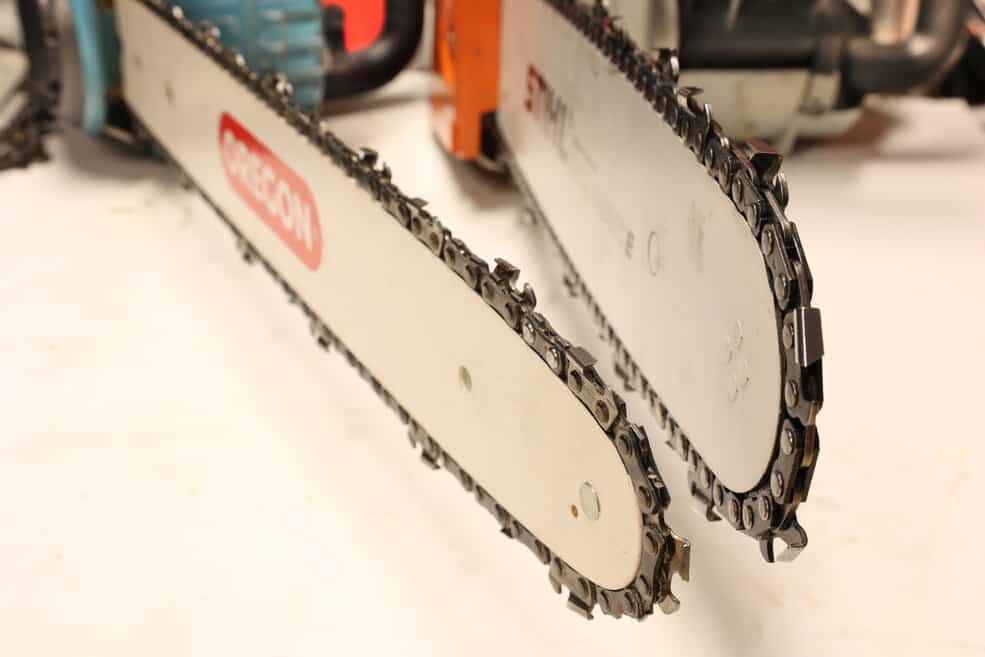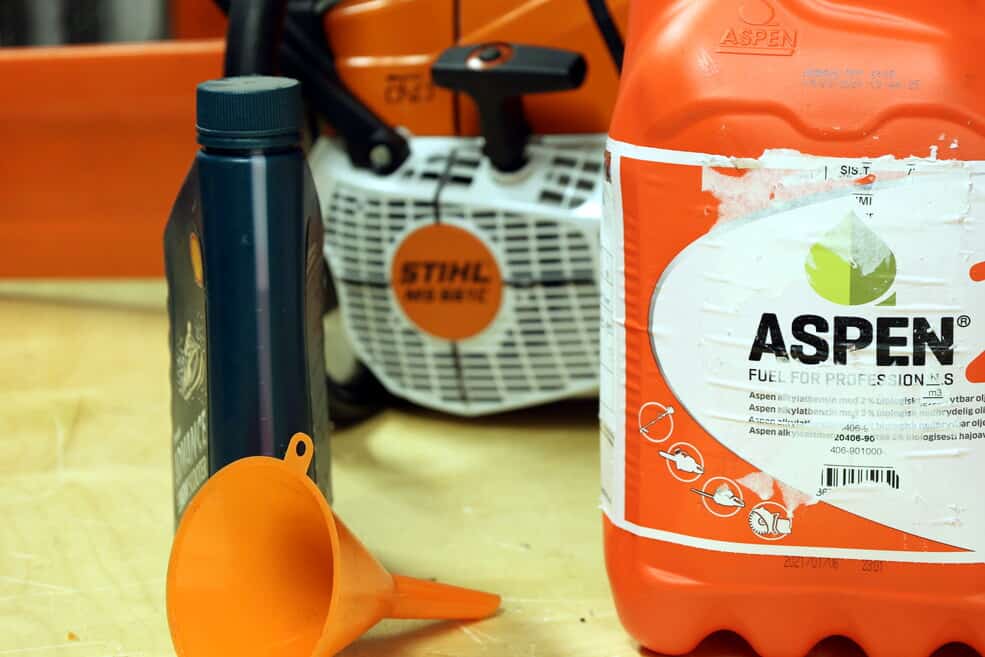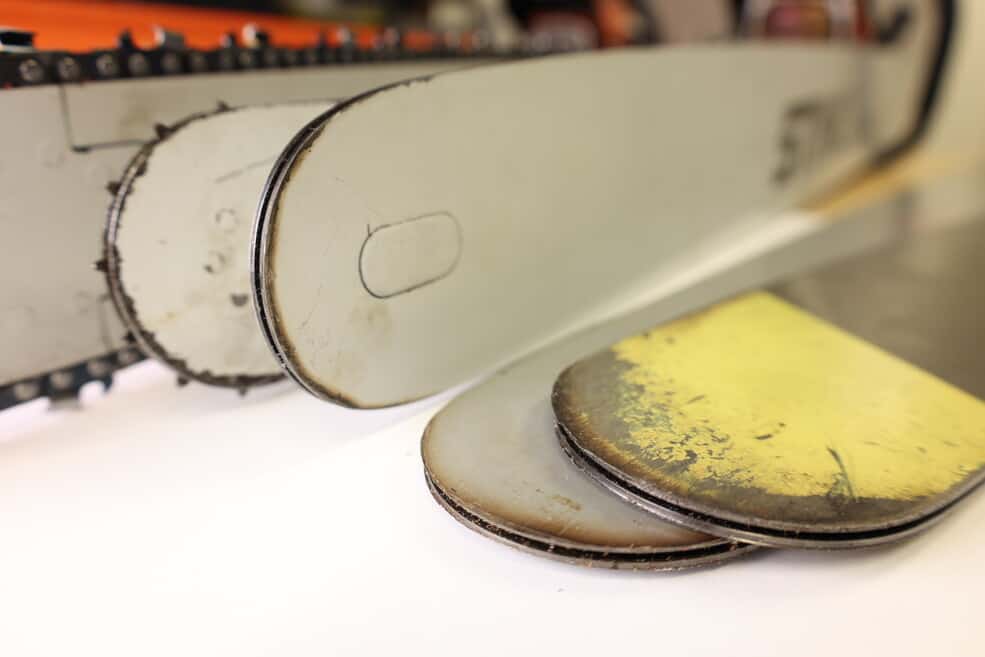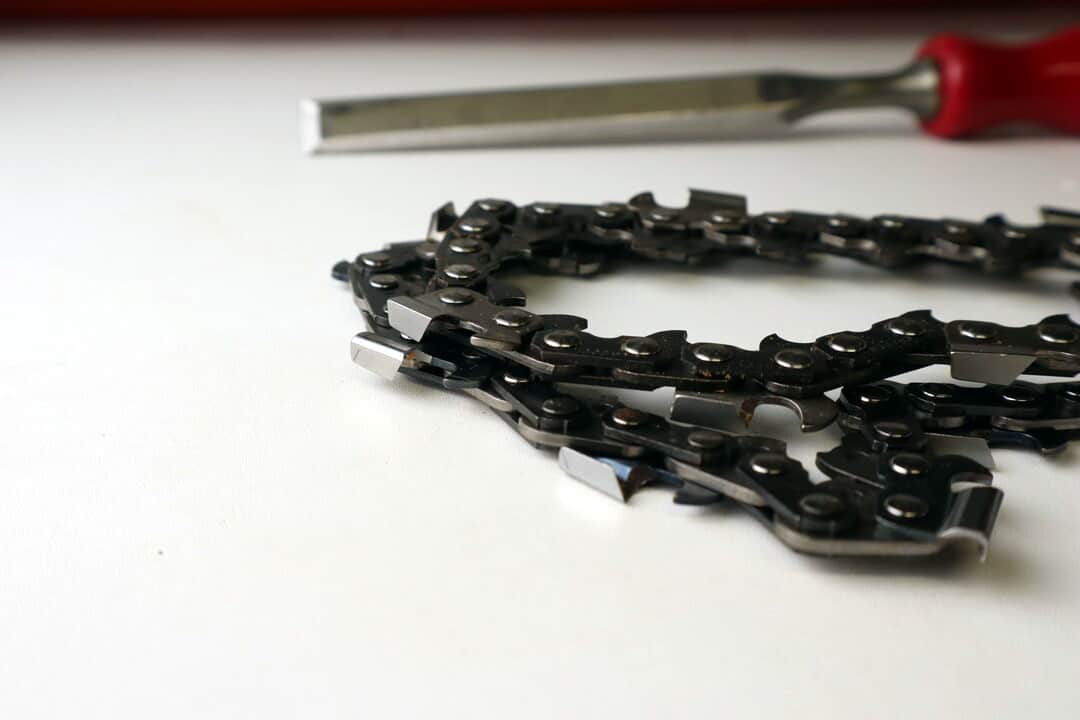When ordering a new chain for your Husky or Stihl chainsaw, you need to know the proper chain length for the bar & saw combination, measured in Drive Links (DL). Unless you have an old chain to count from, finding out the right drive link count is not always easy. The number of drive links […]
Category: Chainsaws
Narrow Kerf Chains and Bars

Lightweight chainsaw chains and bars under the name “Narrow Kerf” (NK) have gained popularity in the chainsaw market in the past two decades, and have been universal adopted by chainsaw manufacturers for the low-power end of the chainsaw range. The narrow kerf bars and chains promise faster cutting and lower weight, but are also a […]
How to Break In a New Chainsaw
After getting your brand new Stihl or Husky saw – or any other for that matter – you should not just go and use it as any old saw. For best service life, a new chainsaw should first broken in before you put it to heavy use. For some years I was under the impression […]
Gas–Oil Mix Calculator
Conventional 2-cycle (2-stroke) engines need oil in their gas to provide lubrication. This simple calculator tells you how much oil to mix into gasoline for a 50:1 or other mix ratio. Which mix ratio? Most 2-cycle engines work best with a gas-to-oil mix ratio of 50:1 when you are using a high-quality 2-cycle oil. Most […]

Most two-stroke outdoor power equipment such as chainsaws and leaf blowers require fuel that is a mixture of gasoline and oil. For best operation, the oil must be mixed in at a specified mix ratio relative to the gas, with typical ratios ranging from 100:1 to 15:1. The proper fuel mix ratio is a hotly […]
Pre-Mixed Fuel – Worth the Money?
Chainsaws, leaf blowers and other small 2-cycle engines need some oil in their gasoline to keep the motor lubricated and in running order. There are two main ways to go about this: mix motor oil into regular gas yourself or buy special pre-mixed fuel. In this article, we are going to talk pre-mixed fuels: what […]

When dealing with older Stihl chainsaws, you often need to find out the saw manufacturing year and model number (i.e. type) of the saw. These pieces of info are critical, for example, for knowing which replacement parts are going to fit. But with many Stihl saws having carried this info only on a sticker – […]

This article tells you how to determine which year your Husqvarna chainsaw was manufactured. The year is rarely printed anywhere on the saw, but can in most cases be deduced from the Serial Number (S/N). The production year is coded in the first one, two or four digits of the Serial Number. The coding depends […]
Why Use Hard Nose Bars?

Most chainsaw bars these days are sprocket nose, but there are still some bars available with a sprocketless, plain steel tip. These bars are called alternatively hard nose, hard tip, or solid nose, and while nowhere as common as sprocket nose bars, are still around. We recently got a batch of old bars which included […]
Semi vs. Full Chisel Chains

The world of chainsaw chains is full of small differentiations: the four gauges and seven pitches, standard vs. low profile chains, narrow kerf vs. regular and skip tooth – plus a few proprietary terms like Picco and Pixel thrown into the mix. This array of choices can be pretty confusing, particularly for a beginner. Today, […]